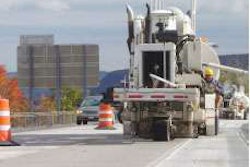What I Didn’t Learn from a Mustang, Corvette and a Mini Cooper S
By Kirk Landers
America was just emerging from the oil-embargo recessions of the ‘70s when Ford ended a long, miserable period of automobile engineering by introducing several stunning new models, including an ‘80s reprise of the Boss 302 Mustang. It combined the head-snapping performance of the first pony cars with a level of fuel efficiency once thought impossible in a V8 engine.
An act of providence gave me almost exclusive access to the cars and to Ford’s proving ground facilities for a morning. I used the opportunity to drive the vehicles maniacally in several different venues. It was while driving the Mustang on the handling track — and spinning out repeatedly — that I realized America was once again fielding cars that could go fast enough to kill yourself in.
It was an odd sensation and it has never left me.
On one hand, as a young automotive editor, it was a moment of ecstasy in a day filled with unending joy. We had been driving ugly, underpowered econoboxes for nearly a decade. Unless you built your own car, driving had become tedium. I used to dream of getting out of my wretched company car and shooting it with a pistol, like a cowboy putting down a horse with a broken leg. It was the only moment of pleasure I got from the vehicle.
Enter the re-engineered 302-cubic-inch V8 Mustang. It seemed like — and was — the beginning of a new era for car enthusiasts in America.
But there was this other rush, too, a more sober one: You really could kill yourself in a vehicle like this, one that begged to be driven hard right up to the time you wrapped it around a tree or rolled it a few times in to a ditch.
That moment of rational insight didn’t change my appetite for hot cars, though my choices have been an eclectic spectrum defined on one end by a Corvette and on the other by a Mini Cooper S. But it did plant a thought that changed how I drive, and changed my perspective on highway safety.
In the ‘90s, when I got involved with road issues as a construction writer, I learned that rural roads produce a much higher rate of fatalities than other driving venues in America. I understood. Quiet, bucolic country roads can produce the same kind of narcotic effect that hot cars do, encouraging people to focus on the aesthetics of the driving experience rather than the weighty responsibilities that come with it.
My Mustang moment also changed my attitude toward safety advocates, who had been painted as overbearing, car-hating bureaucrats in the automotive press of the ‘70s and ‘80s.
That evolution came full circle last year, when the Federal Highway Administration issued a report showing that the rate of driving fatalities per vehicle miles driven had fallen to the lowest number in decades. FHWA attributed the breathtaking improvement to a combination of proactive measures, including programs to improve the safety of rural roads, to increase seat belt usage, and to crack down on impaired and/or distracted drivers.
As one who considered much of that effort to be political propaganda, I have to say, I’m impressed. And I was wrong. I thought 50,000 traffic fatalities annually, give or take a few thousand, was a reasonable number and one that we would never really improve upon. Fortunately, others were not encumbered with my beliefs and made real progress in an important area.
Finally, one of the most striking things about the programs that produced this improvement is that they cost very little. In a political culture where opportunistic politicians and media personalities rant endlessly about government inefficiency, this example of remarkable efficiency has gone largely unreported.
I can’t make up for that, but I can say thanks to all who persevered and overcame. Your work has made our lives better.













